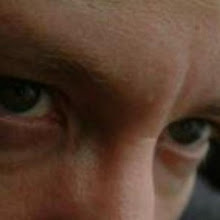Random is a pattern, or at the very least, it is the absence of all other patterns.
Probability Theory states that each event is entirely independent of each other. The second toss of a coin should have no bearing on the first toss. This would be fine for two coin tosses by two different people in two different locations. That would be 'independent'.
However, it would seem as if the same person tossing the same coin multiple times to some degree is essentially the same 'event'. The odds of this person being able to toss the coin landing on heads (H) for an extended period of time, tends toward zero as the same set increases. Eventually they will get a tail (T). The Law of Large numbers says that over a huge number of samples, the number of heads will approach the number of tails.
This implies that there is some type of historic correlation within a set of coin tosses, no matter how infinitesimally small. Over infinitely, one expects that a fair coin cannot generate all heads. Sooner or later a tail must turn up, thus there is some dependence.
If you look at series of coin tosses, for any arbitrary series, some of them are random, and some of them are not. For instance, using H for heads and T for tails, the series H, H, H, ... is not random, nor is its converse T, T, T, ...
A geometric series, like the Fibonacci series encoded into a series is not random either, so H, T, T, H, H, H, T, T, T, T, T, ... as it grows would not be random. The same is true for any other known encoding of any geometric series. I.e. if there is some emerging 'pattern' over time, then over time, the series is not random, it follows a pattern.
The entire set of all series is composed of purely random series R and non-random series N, where there are significantly more non-random series than there are random ones. Likely then R union N is the set of all possible series, and N is larger than R, but a significant margin.
If you where to take the Nth entry in a random series, and subtract from it, all of the possible next none random values, what would remain? For heads and tails, assuming the series was actually random, and you subtracted all of the non-random values, sometimes, one of H or T would have a higher likelihood of appearing.
Statistically, they each have a 50/50 chance, but that's the probability without regard to history. Historic events, in order to be random themselves must have some influence on the outcome. For example, if you flip a coin five times and each one is a head, the odds that the next one is a tail is better than 50/50. The odds that the series is in N is minuscule, so as the series gets longer, it is increasingly likely that it must be in R.
Monday, September 24, 2007
Random is a Pattern
Posted by
Paul W. Homer
at
8:58 AM
![]()
Subscribe to:
Post Comments (Atom)

No comments:
Post a Comment